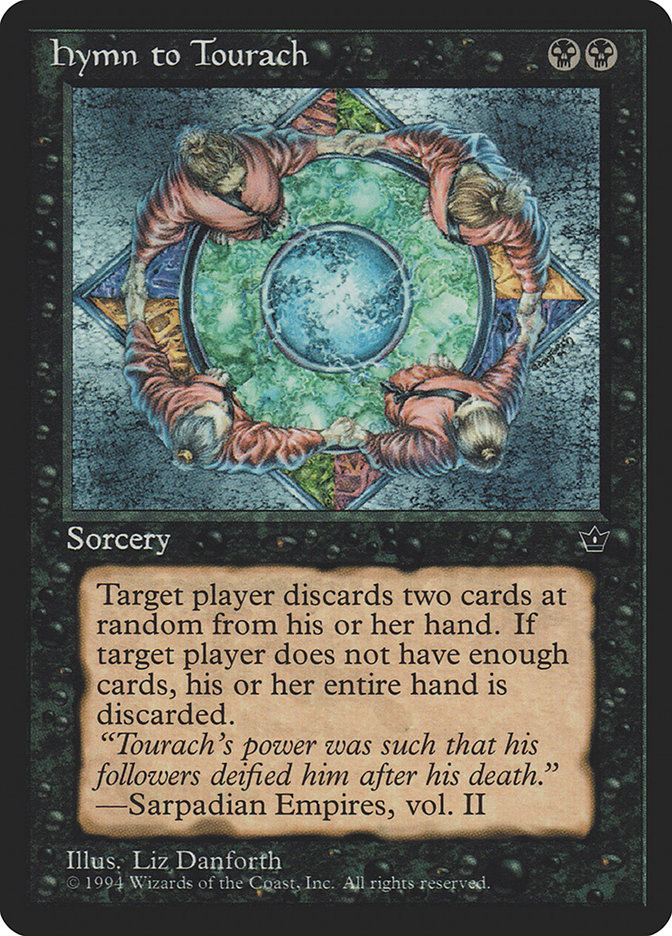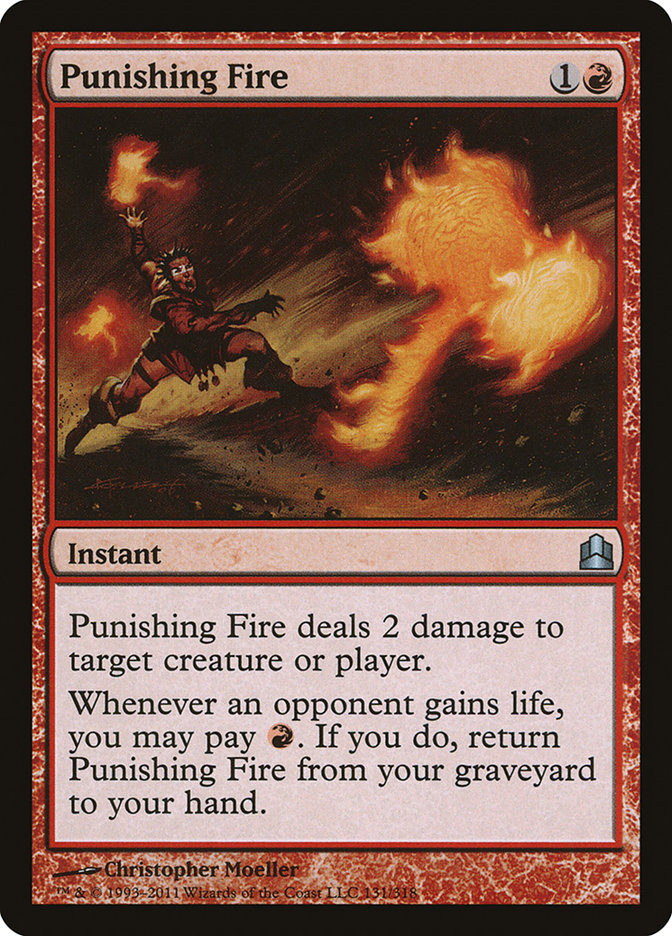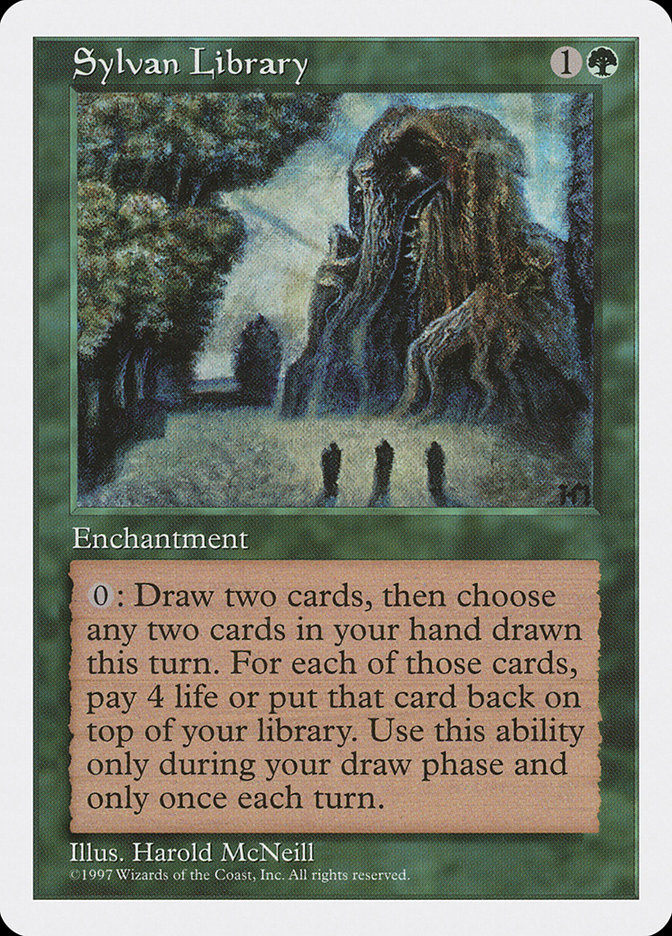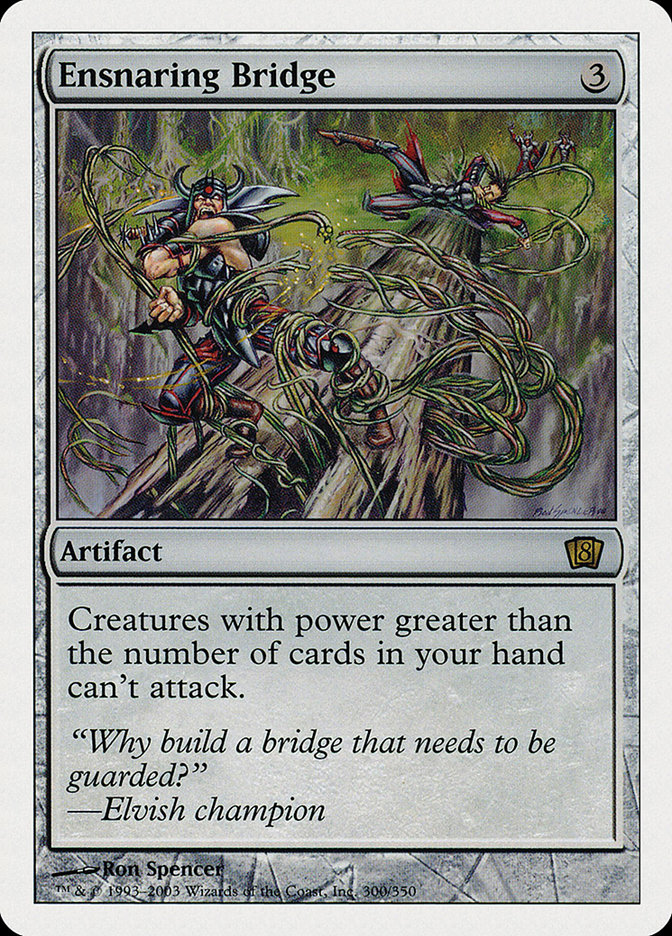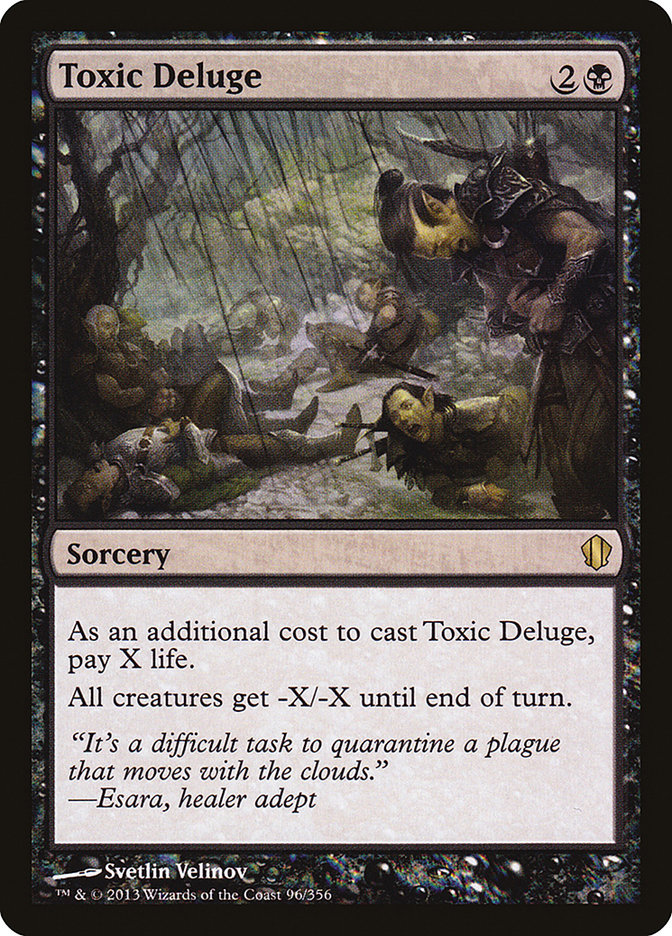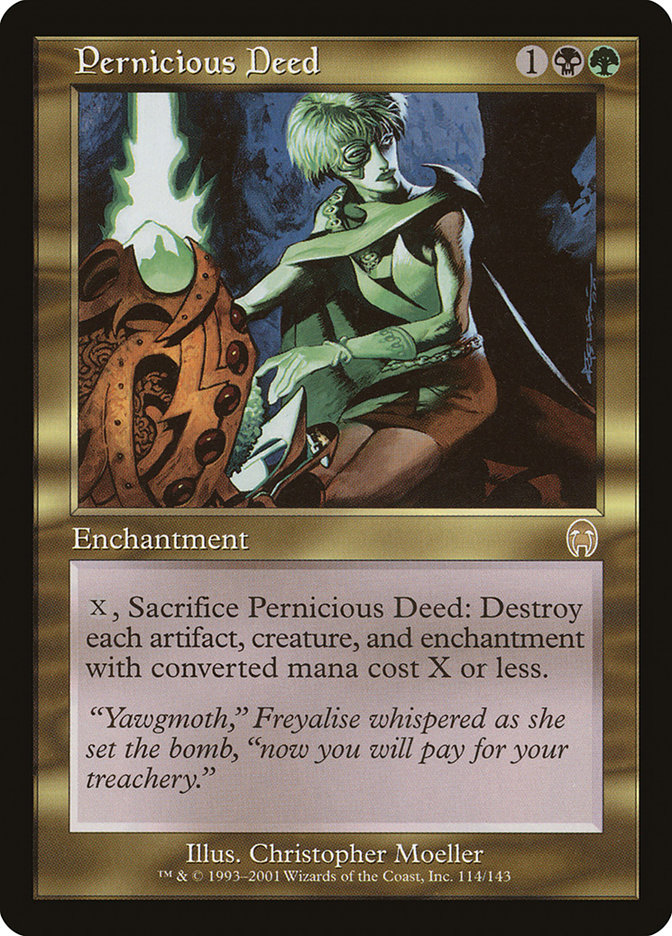So we begin here . . .
Grand Prix Washington DC is only a day away, and I couldn’t be more excited to play in it with a deck that I’ve grown to love. In a format like Legacy, familiarity goes a very, very long way for me, and knowing exactly what I need to be doing at all times is very important.
I began playing Jund at the StarCityGames.com Invitational in New Jersey this past summer. After playing a different Legacy deck every tournament before then, I finally felt like I found something I could get comfortable with. Though I was very discouraged by the huge showing of Sneak and Show at the Invitational in Indianapolis, I wound up sticking with it for Eternal Weekend’s Legacy Championship. I came in 46th at that event, but most importantly I learned a metric ton of information. With this information, I present a "road map" for building and tuning Jund from the ground up.
Why Should I Play Jund?
This is easily the most common question you’ll probably hear when talking about this deck. With the insane amount of options in a format as vast as Legacy, why would you want to play some boring ol’ heap like Jund?
Well, firstly, it’s the best-positioned fair deck in the format for the Grand Prix.
Wait, what?!
I know that I tend to say some pretty outlandish things, but I truly believe that if you’re looking to play a fair deck then this is where you want to be. The generally accepted boogeyman of the format is Sneak and Show, and Jund has the most capability of dismantling almost any strategy trying to beat the menacing combo deck. Many of the decks trying to take down Sneak and Show are creature based—Elves; Death and Taxes; Maverick; and RUG, U/W/R, and Grixis Delver—along with plenty of other major strategies like other tribal decks and Shardless BUG. Jund has the tools to fight all of them favorably, disrupting and breaking down every other deck playing reasonable creatures.
You’re innately strong against Jace, the Mind Sculptor.
Jund is also exceptionally strong against planeswalkers, specifically Jace, the Mind Sculptor. Between a Bloodbraid Elf cascading into either a burn spell or hard removal spell, just having said burn or removal spell, and the exceptionally strong attrition game you present, you aren’t short of ways of opening up your opponent’s defenses, threatening, and killing a Jace.
You have access to the most individually powerful and efficient creatures and removal. By definition, you are a "good stuff" deck. You aren’t devoid of synergies, but you aren’t trying to set up an insane cascade in the way that Shardless BUG is capable of doing or a "catch 22" scenario that Delver decks are trying to create. All of your cards do very powerful things and don’t necessarily need the help of other cards to be good. Because of this, your cascades have a very strong chance of being threatening, and like the Jund decks of old, jamming constant action against your opponent can often be enough.
Last but not least is flexibility. Jund is one of the more flexible and customizable decks out there, and you can very easily tailor it to fit your style and your expectations in a tournament. The core of the deck is less about what cards you’re actually playing and more about the density of a role you want to fill. For example, if you expect a lot more Elves and Deathblade than normal, you can opt to shrink your discard package to expand your removal package. If you want more against Delver decks, you can introduce an expanded attrition suite to cover the various fronts that each Delver deck can attack from. The beauty of it all is that none of this really messes with the focus of your deck since you’re still playing such powerful singular cards to begin with.
Why Should I Not Play Jund?
Jund, like any other deck, is certainly not without its glaring weaknesses. While the dedicated combo matchups aren’t nearly as "unwinnable" as people tend to think, they’re still pretty bad. Oftentimes you can curve out with Thoughtseize, Hymn to Tourach, and Liliana of the Veil and still lose because of the sheer velocity of Brainstorm, Ponder, and Preordain. Not having access to Force of Will is the biggest reason why combo can be so difficult for Jund and is also a major consideration for not playing the deck at all.
One other major weakness is its inability to adjust against a fair number of fringe decks. Junk, Burn, and Nic Fit are just a few strategies that have a very favorable matchup against Jund, and there isn’t much that can be done about it without losing slots to another more commonly played deck.
Building The Shell
There are four primary suites that a typical Jund deck wants to fill: creature, removal, discard, and utility. As a general tip, you want to do what you can to maximize your cascades, always making sure you get something powerful out of it.
Creature Suite: 14-17 Slots
This is where your staying power lies. The generally accepted creature count and choices are both very stern, and there isn’t much wiggle room in this department since all of the choices have the absolute most power and efficiency available.
Bloodbraid Elf: A dominant force in Standard and banned in Modern, Bloodbraid Elf is the hallmark card of the deck and is what enables the deck to keep up with the likes of Ancestral Vision out of Shardless BUG and other card-advantage spells. Its distinct effectiveness against Jace, the Mind Sculptor is the real selling point, as it enables a plethora of ways to either destroy it outright or clear a path to attack into it (depending on build).
Deathrite Shaman: Arguably the best card in the deck and probably the only card that should always be a four-of. This one-mana planeswalker is nothing short of spectacular on every front. It gives you acceleration in the early game, provides stability when falling behind, and has the ability to break board stalls and pull ahead among other functions all while being an inherent graveyard hate spell. Deathrite Shaman is a mainstay in Jund and takes your already robust game plan to a whole different level.
Dark Confidant: One of your primary sources of card advantage, Dark Confidant is a great fit in Jund mostly due to how cheap all of your spells are and how much each individual spell gives you. One of the less talked-about benefits to having Dark Confidant is the amount of reach against many combo decks. Being able to provide a reasonable clock (with help of course) while also getting you to your key tools faster is near essential. In a vacuum, Bob is probably the next-best thing you could be casting against unfair decks if you don’t have another discard spell.
Tarmogoyf: The best vanilla creature ever printed, there isn’t much that needs to be said about Tarmogoyf. It’s cheap, it’s efficient, and it can end games quickly. For two mana, you can’t get a better deal. Goyf can be a bit better in Jund than in other decks because of the decent amount of burn you can run, more specifically Punishing Fire. This ensures that you are certain to have a leg up in Tarmogoyf fights.
Other primary options include Scavenging Ooze and Grim Lavamancer.
Discard Package: 5-8 Slots
You generally want enough discard to see at least one in a keepable opening hand but not too much since you’ll increase the likelihood of suffering from the ever-famous "Midrange problem" of having the wrong part of your deck at the wrong time. These slots are your first line of defense against dedicated combo decks, so skimping on these is not advised.
Thoughtseize: Thoughtseize is one of the best discard spells in Magic history—and for good reason. In a format and/or metagame where the pressure of hyperaggressive strategies isn’t prevalent, Thoughtseize flourishes. Legacy is one of those formats, and Grand Prix DC is one of those metagames. Nabbing things like Sneak Attack, Batterskull, Griselbrand, an opposing Bloodbraid Elf, or even an Empty the Warrens or Ad Nauseam makes Thoughtseize well worth playing over cards like Inquisition of Kozilek.
Inquisition of Kozilek: With that said, playing Inquisition in conjunction with Thoughtseize is great too. While your life certainly should be used as a resource, Jund can certainly have problems with it. Between fetch lands, Dark Confidant, Thoughtseize, and your opponent hitting you, you may not want everything you do hurting you. Inquisition provides a nice cushion while still hitting important components of combos and synergies.
Hymn to Tourach: One of the biggest ways to push a game in your favor is by playing Thoughtseize or Deathrite Shaman on turn 1 and then following up with a Hymn to Tourach. Don’t let the "random" clause dissuade you from evaluating it. Oftentimes decks want to utilize every single card to maximum effect even if the cards you wind up hitting aren’t part of their primary plan. Against many combo decks hitting even one of their important pieces can give you an enormous amount of time to kill them.
Other options include Duress and Cabal Therapy.
Removal: 7-10 Slots
A nice mix of cheap burn-based removal spells and multipurpose general spot removal is recommended. You have a ton of choices here, and you even have a spell that functions off of an engine. What Jund lacks in counterspells it definitely makes up for in having one of the biggest selections of removal out of all the midrange decks.
Abrupt Decay: Continuing the efficiency trend, Abrupt Decay is the all-purpose go-to removal spell. Nearly every single fair deck has something that Abrupt Decay hits cleanly, and a surprising number of unfair ones do too. This in some non-zero amount should be your first inclusion when building a removal suite for Jund.
Lightning Bolt: Probably your next-best removal spell against creatures (obviously) but gets a whole lot better when you want to deal with a field of Deathrite Shamans, Delver of Secrets, Goblin Lackeys, Mother of Runes, and other deadly one-drops. Your Lightning Bolt count will vary drastically depending on if you choose to run the Grove of the Burnwillows + Punishing Fire engine since having too much burn-based removal will either take away from another primary core of the deck or will take away from the remaining slots dedicated to hard removal spells. That said, Lightning Bolt is the best option for the mana.
Punishing Fire (Grove of the Burnwillows a prerequisite): Punishing Fire is one of the reasons if not the reason why Jund is so effective at dealing with other creature-based strategies. This recurrent repeatable threat can completely change the complexion of a game when given the chance, and it’s also very difficult to stop at that point as well. The downside is that it takes a little while (about a turn and a half to get rolling if you have both pieces) and you have to basically play three or four awkward unfetchable Taigas in your deck. That said, this is a very powerful engine that should be in every build.
Maelstrom Pulse: Maelstrom Pulse is slow, kind of clunky, and can be downright awful compared to the other fantastic choices Jund has. However, having the ability to not only destroy things over the converted mana cost of three (Jace, the Mind Sculptor; Sneak Attack; Leyline of Sanctity; and Batterskull to name a few) but destroy multiple problem cards as well (Tarmogoyf, Goblin tokens, Spirit tokens) is what makes Pulse such a nice tool to have in your maindeck.
Other options include but aren’t limited to Go for the Throat, Dismember, Forked Bolt, Chainer’s Edict, and Diabolic Edict, with some consideration to Searing Blaze.
Utility: 4-6 Slots
Your planeswalker/miscellaneous slots. Here you generally want cards that can do a wide variety of things that are disruptive to your opponent and/or an additional source of card advantage.
Liliana of the Veil: Good removal, great discard effect, and an enormous amount of pressure that some decks can’t come back from. Liliana of the Veil is one of the most versatile weapons in your arsenal and one of the few ways to keep the momentum going against a combo deck while putting on a clock from another source.
Sylvan Library: An excellent source of repeatable card advantage every turn. Sylvan Library can serve as a great utility card for attrition matchups as well as a functional cascade manipulator and damage-mitigation tool for Dark Confidant. The downside to playing a card like this is dealing with an essential "do-nothing." It is not to be considered an action spell. Almost all of Jund’s cards are threats, answers, or translate into one of those two the turn it comes down. You’ll have to ask yourself if having a card that generates a major but nuanced advantage over time is worth having over a card that impacts the board as soon as it hits play.
Umezawa’s Jitte: Another great tool for creature matchups on both offense and defense and doesn’t suffer the same problem as Sylvan Library when in the midgame or further. The issue is that you already have so much against creature decks in game 1 that you may not want to overload too much on that. You can use other general tools to better your bad matchups and relegate cards like Jitte to your sideboard for when your primary combo cards aren’t applicable. That said, you aren’t going to get a much better Equipment than this, especially through fifteen rounds of a Grand Prix.
Other options include but aren’t limited to Sensei’s Divining Top; Life from the Loam; Garruk Relentless; and Chandra, Pyromaster. Additionally, you can just opt not to invest as much into utility and play more creatures, removal, or discard.
Building The Mana Base
One of the major things to keep in mind with Jund is that it’s a very mana-intensive deck by nature. Thus you’re going to want as many ways to safely and reliably get and utilize your resources as possible. This includes watching your fetch land count (for things like Stifle), your basic land count (for Wasteland and Blood Moon), and your overall land count (so you don’t miss land drops). If you’re playing Punishing Fire, then you need to make accommodations for Grove of the Burnwillows.
Fetch Lands: 7-10 Slots
Four Verdant Catacombs seems to be the norm, as it can fetch every single fetchable land in the deck. After that you have a split choice between Wooded Foothills and Bloodstained Mire.
More RUG Delver decks have been running Wooded Foothills to better optimize their Stifles on potentially unsuspecting opponents. You can also utilize this tactic on players that are aware of this strategy. This can also be particularly important against RUG Delver, for example, as this may give you a chance to safely play around their Stifle by having them just play their turn 1 threat and not leave it up. Granted, this could very much be irrelevant most of the time and many Delver players may wind up not taking the aforementioned line of play if they find one they deem better, but if card availability isn’t an issue, then having this potential edge is better than not having it. Outside of that I generally want more ways of getting basic Swamp than basic Forest.
Dual Lands, Wasteland, & Utility lands: 10-14 slots (including Grove of the Burnwillows)
The bulk of your lands are rather self-explanatory, with a slight edge to black sources over green and red, especially if you’re playing Grove of the Burnwillows. The Wasteland count can vary, though three-ish seems to be the norm.
Treetop Village is another land consideration, especially if your land count is approaching the mid-twenties.
Basic Lands: 0-3 slots
Forest and Swamp are the usual basics for Jund. You play these specific lands because you’re allowed to cast all of your spells through a Blood Moon with them, including Abrupt Decay. If your land count is high and you really want to play safely through Wasteland, you can play a basic Mountain as well. The only issue with that is that it doesn’t cast Deathrite Shaman, which could make some opening hands rather awkward.
All in all, your total land count will wind up being somewhere between 22 and 25 lands, with the most common builds being around 23.
Sideboard Cards & Strategies
Disclaimer: The cards being mentioned are merely scratching the surface of the amount of options you have. There are literally hundreds of cards you can use to construct a sideboard. It is on you to figure out what you want relative to your own preferences and expectations.
Combo
The most important thing for Jund when working on a sideboard is your dedicated combo hate. While the matchups aren’t "unwinnable," you certainly aren’t going to have an easy time either. You lack the ability to counter an important spell, so you have to find ways to halt their progress elsewhere all while having a way to kill them before they can recover.
Looking at the two major culprits, Show and Tell variants and Storm variants, we want to find ways of handling their threats and/or breaking down their resources without overloading our sideboard. Unfortunately, there aren’t very many cross-applicable cards that do that to great effect, so our only choice is to invest more into the sideboard. There is no one card that stops either strategy cold, so you want a good mix of cards that attempt to thwart their plan on different axes.
Duress: Adding even more discard is a good way of reinforcing your game 1 plan against combo decks. Jund will usually have a lot of room to work with post-board since most if not all of the burn spells and useless spot removal spells get nixed.
Ensnaring Bridge: One of the few tools available that actually keeps Show and Tell decks from literally (and figuratively) annihilating you. This can buy you a great deal of time by preventing an Emrakul or Griselbrand from attacking. It’s most effective in game 2, however, as you better believe that they’ll be prepared for it in game 3 (and that’s assuming they weren’t already prepared for it in game 2).
Pyroblast / Red Elemental Blast: If you have a specific hate card that you’re looking to protect against combo, then this is a great way of protecting it. Cards like the aforementioned Echoing Truth are a sure way of making your entire foundation fall apart, as well as a quick Show and Tell. Having some number of these can really change the dynamic of your combo matchups and has a great number of applications in non-combo matchups as well.
Graveyard hate: Your Reanimator, Dredge, and other graveyard-based combo-deck hate goes here. As with most other combo hate, it’s a great idea to have a nice mix of whatever you prefer, as it’s very easy for experienced players to play around a specific one but rather difficult to play around ones that approach in different ways yet have the same result. As a tip, I would recommend using the spot hate (Surgical Extraction and Extirpate) in small doses to better supplement your bigger and more powerful graveyard hate (Nihil Spellbomb and Tormod’s Crypt).
Karakas: Particularly useful when you want an extra land against fair decks anyway but aren’t ready to play a potential do-nothing like Life from the Loam. Karakas is a nice fit when trying to keep those massive creatures at bay, especially when combined with all the other hate you bring in. Combining this with Crop Rotation can turn your cascades into a potential tutor for the powerful land. If you have the sideboard space and really, really want to beat Show and Tell, this is yet another line of defense against it.
Midrange/Attrition
Sideboarding against midrange decks greatly depends on three major overarching factors:
– What are the key cards?
– How are you approaching the match?
– How are they approaching said match?
I’m of the firm belief that one’s sideboarding tactics should be as dynamic as possible, always being willing to change your plan if one isn’t working and finding cards that are capable of doing that. In midrange and attrition mirrors, this is especially important. If you tend to approach a Jund mirror in a much more aggressive manner and want to simply jam threats constantly, then you may not want to bring in that Life from the Loam. Conversely, if your opponent seems to favor playing a very heavy attrition game, made evident by taking very conservative and safe lines, then it may be okay to assume an extra Duress or two out of the sideboard from them. Context is everything here, so like any match be ready to adjust on the fly.
Life from the Loam: Having this effect ensures that you’ll be able to "play Magic" if you can get to two mana or more. It also is a great tool to keep your opponent from "playing Magic" by continuously trading your draw step for their nonbasic land via Wasteland. This is the go-to card if you’re looking to wear your opponent down of resources, especially against RUG Delver.
Toxic Deluge: There are a ton of powerful sweepers available to Jund, but with the release of True-Name Nemesis, most of those choices became rather awkward to play. Toxic Deluge is far and away one of the best sweeper effects ever printed, and it really makes its mark in Jund’s sideboard by being able to easily kill the new Merfolk on the block. The fact that you can cascade into it off of a Bloodbraid Elf (and attack with it after the dust settles) is astounding. This is one of the best support cards you can have when looking to reinforce your creature matchups, and I wouldn’t be surprised if one would want it to deal with a Griselbrand or other huge threat. This card is the real deal, and it redefines what a sweeper can and should do for this color combination.
Engineered Plague: Probably one of the few cards in direct competition with Toxic Deluge. Engineered Plague still has the ability to deal with True-Name Nemesis but is much better against the tribal decks and Death and Taxes in the long game due to its indefinite effect. If you prefer having a somewhat smaller range of creatures to hit but the ability to prevent those creatures from becoming a problem again, then Engineered Plague is for you.
Umezawa’s Jitte: As mentioned earlier, Umezawa’s Jitte is excellent at pulling ahead and pretty good at coming from behind. When in your sideboard, you give your maindeck options some breathing room by being able to play more cards that are good across the board.
Pernicious Deed: A great supplementary sweeper effect at a very reasonable cost but more vulnerable to effects like Abrupt Decay, Pithing Needle, and Phyrexian Revoker. The ability to handle things like Counterbalance, Swords, and Blood Moon on top of a very wide range of creatures makes Pernicious Deed a very versatile sideboard card, especially alongside Toxic Deluge (or whatever nonpermanent based sweeper you’re going with).
Engineered Explosives: Strikingly similar to Pernicious Deed with the upsides of being a quicker and cheaper answer to tokens, Chalice of the Void, and other major enablers and Prison-type effects. The tradeoff is that it’s an awful cascade and you don’t have the freedom of adjusting when it’s already resolved.
Garruk Relentless: Another option for the players looking to get really grindy. Garruk Relentless has a lot going for it as a source of constant board presence as well as a potential tutor engine if given the time. Being a little soft to Abrupt Decay is an issue, as is its relative speed, but the Abrupt Decay weakness will generally require your opponent to invest an attacker. A fine choice for the scrappy.
Maindeck Extensions & Specificity
Lastly, having cards that aren’t necessarily for any specific matchup but are meant to fine tune your maindeck in games 2 and 3 is pretty commonly seen. These cards usually consist of extra copies of already existing maindeck cards and cards that serve a very similar function as a maindeck card. This can include additional Maelstrom Pulses or Abrupt Decays, a fourth Bloodbraid Elf if you aren’t playing the full set in the maindeck, a Golgari Charm as a big role-player for drastically different strategies, or an additional utility land. This is a nice way to fill in the last sideboard slots if you feel that you have everything else covered, as your card choices here will be very general. This also makes things a bit easier for adjusting on the fly for games 2 and 3.
On the other hand, there’s definitely merit to having cards that fill the role of specifically handling a certain card or interaction. If you really, really want to destroy Equipment, then Ancient Grudge is your go-to card. Krosan Grip can fill that same role, but having the ability to destroy Counterbalance is the major selling point for that card.
Here is what I’ll be battling with at Grand Prix DC:
Creatures (16)
Planeswalkers (4)
Lands (23)
Spells (17)

Final Thoughts
Jund is pretty clearly a powerful deck, and while it doesn’t do anything flashy or spectacular like many other decks, it comes in, does its business, and leaves. You have game against most of the popular decks in the format right now, and you know exactly what you’re getting out of the spells you cast. It’s not the most powerful thing you can be doing in the format in a vacuum, but I still highly recommend playing Jund if you’re looking to beat the decks trying to beat the best combo deck.
Grand Prix DC will be my first Legacy Grand Prix and my first Grand Prix with three byes. Even then, nothing is guaranteed. Understanding that you can put a ton of time into preparing for an event and still not win a single game is very important, as it doesn’t mean that said preparation was a waste of time. I’m very grateful to have learned a ton in such a short amount of time from some of the East Coast’s best Legacy players, and while this tournament is one of the most important for me, it surely won’t be the last one.
"No one deserves anything."
Best of luck to everyone attending the Grand Prix! May your cascades be insane all weekend.
Thanks for reading~
Anthony "Pyromaster" Lowry
Twitter: @aulowry


